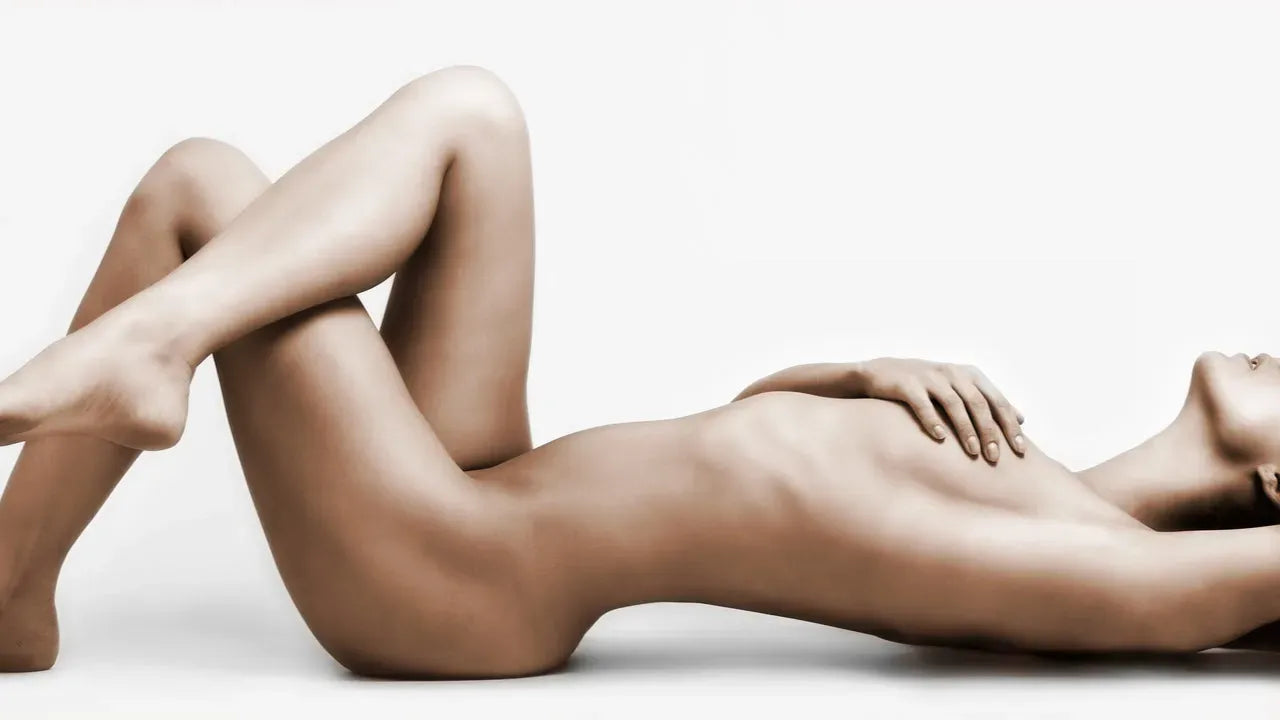
How to navigate your clitoris as the climax of female sexuality
There’s more to this part than meets the eye, both literally and figuratively.
You know what they say: If you want something so badly, you need to fake it till you make it.
But that’s not a very sound advice when you’re lying frustrated in bed, and your male partner’s thrusting on top of you with a little too much gusto. You’re just not feeling it at all, no matter how hard you try.
You’ve probably found yourself in this sticky situation because you’ve been taught that both men and women get orgasms from intercourse. That the sexual organ of men is the penis, while women have a vagina.
But do you know that intercourse isn’t how most women achieve orgasm in the first place? In fact, the key to your sexual pleasure lies in another body part altogether: the clitoris.
The ‘little hill’
Why should we pay more attention to this hooded figure?
The clitoris, as it turns out, is the primary sex organ of women, and the only part of the human body whose purpose is to provide sexual pleasure.
Its name may have come from the ancient Greek word kleitoris meaning “little hill,” but don’t you belittle it. The clitoris is roughly about four inches (10 cm) in length!
If you think the clitoris is shaping up to be similar to the penis, you’re not mistaken. Studies show that both organs are made out of the same erectile tissue. It just so happens that one part develops externally while the other is mostly internal.
So how did the clitoris end up being a small yet mysterious part of the female anatomy?
It all started with the Greeks and the Romans, who treated the vagina as the passive counterpart of the phallus in the female body. They spread the belief that the clitoris was inferior or even an anomaly in “lesser” women because it had no role in childbearing.
A long debate ensued throughout millennia, with men ironically leading the discussion. Matteo Realdo Colombo, an Italian anatomist, dubbed it “the seat of women’s delight.” Meanwhile, French anatomist Charles Estienne called it a “shameful member” in his findings.
In a now-debunked claim, the Austrian neurologist Sigmund Freud asserted that women who needed clitoral stimulation to orgasm were “immature.”
As a result, the clitoris has been missing from diagrams of the female reproductive system for the past few centuries. It was only brought back to the picture thanks to urologist Helen O’Connell, who discovered and mapped its full anatomy in 1998.
The mountain view
Far from a little hill, the clitoris is a mountain that can take you to your climax. But how does this pleasure center look like in action?
Much like the penis, the clitoris has three main parts for us to explore: the glans, the shaft, and the crura and bulbs.
The glans or head is the only external part of the clitoris, which you probably recognize as that small knob down your nether regions. It’s covered by the clitoral hood, a flap of skin that can vary in size and shape on your vulva. Despite its size, the glans is extremely sensitive, so much that some women are uncomfortable with stimulating theirs directly.
The clitoral glans alone packs a punch with 8,000 nerve endings. That’s twice the number found in the penis.
Next is the shaft or the body, which connects the glans to the rest of the clitoris. This elongated structure also extends towards your pelvis and your pubic bone.
At the other end of the shaft awaits a pair of long crura (clitoral legs) and round vestibular bulbs that surround the vagina. These tissues swell when you’re aroused, which is when you’d start feeling deliciously wet down there. And the best part is yet to come.
Reaching your climax
If experts know a great deal about the clitoris, why haven’t we learned about it in school?
Sadly, the educational system has yet to keep up with the scientific progress in reproductive health. Standards in instructional materials still contain outdated lessons on female anatomy. We’re not seeing the whole picture of female sexuality in textbooks as a result.
And this lack of knowledge is partly to blame why women are having 30% fewer orgasms than men. People simply didn’t know that the majority (73%) of women need or prefer clitoral stimulation in order to climax.
The misunderstanding, however, can have more serious consequences. Female genital mutilation (FGM), the partial or total removal of the external parts of the clitoris, persists in more than 30 countries. Myths about the female genitalia and virginity continue to perpetuate this practice, only resulting in many complications for women.
The World Health Organization (WHO) estimates that over 200 million women in Asia and Africa have lost part of their clitoris through FGM.
Fortunately, conceptual artist Sophia Wallace has taken up the challenge to educate women about their own bodies. She founded ‘Cliteracy,’ a mixed-medium project that aims to present the clitoris as fundamental to the female orgasm.
Through the use of black-and-white typography, she boldly asserts the clitoris’ right to being— both its right to exist free from harm and its right to sexual pleasure.
So what are the benefits that you can get from being more cliterate?
- The clitoris becomes a key figure in your sexual encounters, which in turn can make for more sensual moments for you in the bedroom. It’s a much-needed reminder that your pleasure is just as important as your partner’s.
- Being intimately aware of your body’s natural sensations encourages you to celebrate your own sexuality, instead of being held back by guilt. You’re able to break past taboos to become more open-minded to new experiences.
- Knowing what feels pleasurable to your own body will help you communicate your sexual desires more effectively to your partner when you’re getting intimate. Not to mention, this empowers you to make well-informed sexual choices.
- A study demonstrates that a sense of psychological ownership of a body part plays an important role in how you experience pain. This implies that women who are more conscious of their clitoris are potentially less vulnerable to clitoral pain.
At peak performance
All that being said, what’s the best way to make the most out of our pleasure center?
There’s no single answer to this question. After all, each woman is unique with her own sexual preferences and desires. The only way to discover yours is to explore your own body so you can realize its full potential.
Unsure of where to start? Here are a few suggestions:
- Bare in mind. Whether you’re going at it solo or with a partner, make sure to get your head in the game. You can count on erotica to heat things up if you like.
- Do your own thing. Let your imagination run wild! Feel free to caress your clit using your own fingers, or let your partner’s fingers and tongue do the work. Clean objects can also stimulate you in the most tantalizing way. Why not try playing with sex toys?
- Different strokes for different folks. Go back and forth, side to side, or create circular motions. Just don’t forget to go gentle especially on your first try, then take note of all your favorites.
- Get saucy. There’s no harm in drizzling some lubricant over your clitoris, even when you’re not feeling dry down there. You’d be amazed at its deliriously good sensation.
Now that you’ve learned a lot about your clitoris, you’re more empowered to experience the pleasure that your body is capable of. So the next time you do the deed with your partner, you can stop faking it and start making it happen.
Frequently Asked Questions (FAQs)
WHAT IS A CLITORIS?
The clitoris is considered as the main sexual organ of the female body. With about 8,000 nerve endings, its sole purpose is to give women pleasure. Yet it remains a mystery to many, including women themselves! Think of it as the unsung hero of the female orgasm.
WHAT DOES A CLITORIS LOOK LIKE?
The glans, the part we usually label as our clitoris, is just the tip of the iceberg. The clitoris also has two legs called the crura, which can be as long as 5 inches. A pair of clitoral bulbs cradle the vaginal opening in between the crura.
HOW IS A CLITORIS SIMILAR TO A PENIS?
Aside from how clitorises are mostly internal and penises are external, the two are more similar than most people think. Both organs are made up of erectile tissue that expands when erect. The clitoris is even about 4 inches on average, similar to a non-erect penis.
WHY HAVEN’T I LEARNED ABOUT THE CLITORIS IN SCHOOL?
The full anatomy of the clitoris may have been discovered in 1998, but the educational system has yet to keep up with the scientific progress in reproductive health. Textbooks still show an incomplete diagram of the clitoris, if at all. That’s why teachers are unable to pass along this valuable information to students.
WHAT IS FEMALE GENITAL MUTILATION?
Female genital mutilation (FGM) is the partial or total removal of the external parts of the clitoris. It results in physical, emotional, and psychological harm to women. Still, it persists in more than 30 countries, where myths about the female genitalia and virginity continue to perpetuate this practice.
WHAT’S THE BEST WAY TO STIMULATE THE CLITORIS?
There’s no one best way to stimulate the clitoris. Women differ in how their nerve endings are positioned in their genitals, so you might prefer stimulating one side. We also have our own desires, erogenous zones, and turn-ons, so just explore what feels most pleasurable for you!
Female Sexuality GET STARTED HERE
Female Orgasm GET STARTED HERE
Sex Education GET STARTED HERE

Get your sex toy in 3 easy steps

STEP 1
Navigate to SHOP NOTI and select your preferred sex toy

STEP 2
Add the item to the cart and proceed to checkout

STEP 3
Feel confident and experience guilt-free orgasms





















